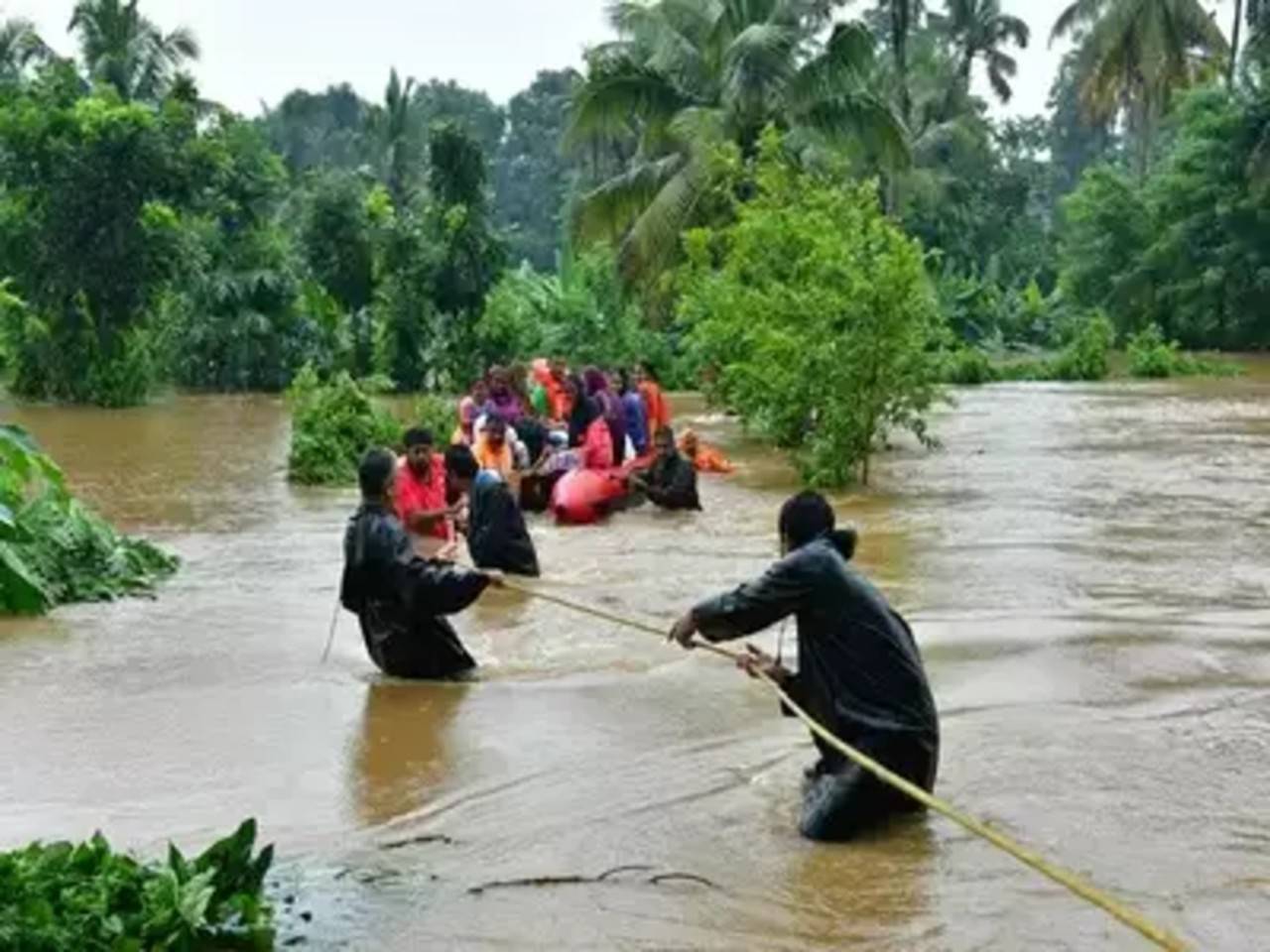Extreme Rainfall Alert: IMD Warns of Deluge Threat in Multiple States

Extreme Rainfall Alert: IMD Warns of Deluge Threat in Multiple States
In a significant weather advisory, the India Meteorological Department (IMD) has raised the alarm with a heavy to very heavy rainfall warning across a vast expanse of the country. Residents and authorities in Andaman & Nicobar Islands, Goa, Maharashtra, Gujarat, Andhra Pradesh, Telangana, Karnataka, Tamil Nadu, and Kerala have been put on high alert for the next three days. The imminent threat of torrential downpours and possible flooding necessitates preparedness at its highest level.
A Closer Look at the Forecast
The IMD’s forecast paints a vivid picture of impending weather conditions that demand immediate attention. According to meteorological experts, the coastal regions of Andaman & Nicobar Islands are likely to experience extremely heavy rainfall, potentially leading to flash floods and waterlogging. Goa, the popular tourist destination, also finds itself in the firing line, with heavy to very heavy rainfall predicted.
As we move towards the western coast, the states of Maharashtra and Gujarat brace themselves for the deluge. The IMD’s warning underscores the likelihood of severe weather conditions in these regions, with heavy rain expected to lash the coastal areas. With a history of flooding concerns, these states must prepare adequately to mitigate potential disasters.
The southern states of Andhra Pradesh, Telangana, Karnataka, Tamil Nadu, and Kerala are not exempt from this looming weather crisis. The IMD’s alert extends to these regions, signaling the need for residents to remain vigilant and take precautionary measures. Inhabitants of these states are advised to stay updated with weather reports and follow the guidance of local authorities to ensure their safety.

The Potential Impact
The forecasted heavy to very heavy rainfall raises concerns about the potential impact on communities, infrastructure, and the environment. Here’s a closer look at what these states might face in the coming days:
1. Flooding: One of the most immediate concerns during heavy rainfall is flooding. Low-lying areas and regions prone to inundation are at a heightened risk. Urban areas, in particular, may experience waterlogging, which can disrupt daily life and damage property.
2. Landslides: Hilly regions in states like Karnataka and Kerala could witness landslides due to the saturation of soil. This poses a significant risk to those living in these areas and travelers passing through mountainous terrain.
3. Transport Disruption: The heavy rainfall could lead to disruptions in transportation networks. Roads may become impassable, and flight and train schedules could be affected. Travelers are advised to check for updates and potential delays.
4. Agriculture: Farming communities in these states may suffer losses as their crops are vulnerable to excessive rainfall. Waterlogging can damage crops and make agricultural land unusable for an extended period.
5. Power Outages: With strong winds often accompanying heavy rainfall, power lines and infrastructure may be damaged, leading to power outages. Residents should be prepared for potential electricity disruptions.
6. Health Concerns: Heavy rainfall can lead to an increase in waterborne diseases. It’s essential for residents to take precautions to avoid health issues related to contaminated water.

Preparedness and Safety Measures
In the face of this imminent weather challenge, it is crucial for residents and authorities in the affected states to take proactive measures to ensure the safety and well-being of the population. Here are some key steps to consider:
1. Stay Informed: Keep a close eye on weather updates from official sources like the IMD and follow any evacuation orders or advisories issued by local authorities.
2. Prepare an Emergency Kit: Assemble essential supplies, including non-perishable food, clean water, flashlights, and first-aid supplies, in case of power outages or emergencies.
3. Secure Property: Ensure that homes and businesses are adequately prepared to withstand heavy rainfall. Clear drainage systems and gutters to prevent water buildup.
4. Evacuation Plans: Familiarize yourself with local evacuation routes and shelters in case the situation worsens and you need to relocate to a safer area.
5. Stay Indoors: During heavy rainfall and storms, it’s safest to stay indoors. Avoid unnecessary travel, especially in areas prone to flooding.
6. Assist Vulnerable Populations: Look out for elderly individuals, children, and those with special needs in your community. Offer assistance if necessary.
Community Resilience and Cooperation
Facing the impending heavy rainfall threat, communities must come together to enhance their resilience. Local neighborhood groups, community organizations, and NGOs can play a crucial role in coordinating efforts to assist vulnerable residents, distribute relief materials, and provide emotional support. It’s in times of adversity that the true strength of communities shines, as they unite to protect one another.
Infrastructure Upgrades
The looming weather challenge also underscores the necessity of long-term infrastructure improvements. States in high-risk areas must invest in better drainage systems, flood protection measures, and disaster management strategies. Such investments not only minimize the immediate impact of heavy rainfall but also reduce the recovery time needed after disasters strike. Additionally, the integration of advanced weather prediction technologies can help authorities make more informed decisions and issue timely warnings.
Climate Change Considerations
It’s essential to recognize that extreme weather events like heavy rainfall are increasingly linked to climate change. Rising global temperatures contribute to more intense and frequent rainfall, making preparedness and adaptation strategies even more critical. States and countries worldwide must continue their efforts to mitigate climate change by reducing greenhouse gas emissions, transitioning to renewable energy sources, and implementing sustainable land-use practices.

Global Solidarity
In an era of interconnectedness, extreme weather events affect not just local communities but also have broader regional and global implications. Collaboration among nations for disaster relief and climate action is paramount. Sharing knowledge, resources, and expertise can help mitigate the impact of such events and build a more resilient world.
Conclusion
The IMD’s heavy to very heavy rainfall warning serves as a stark reminder of the unpredictable nature of weather and the importance of preparedness. While it’s impossible to control the elements, timely action and adherence to safety guidelines can significantly reduce the impact of such extreme weather events. As the affected states brace themselves for the approaching deluge, it is imperative that residents, communities, and authorities work together to safeguard lives and property. Through vigilance, resilience, and a collective effort, these regions can weather the storm and emerge stronger on the other side.




